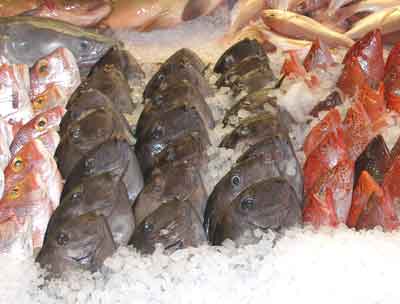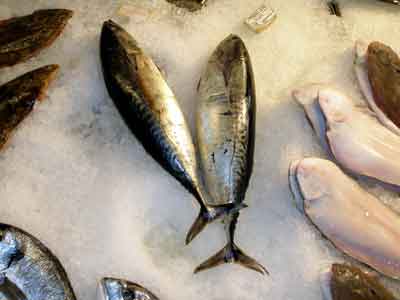
Doctorfish. Found in the Atlantic from Massachusetts to Brazil and in the northern Gulf of Mexico and the Caribbean, where it is most often eaten. It is a dark, often blue-grey to dark brown, but can change its colour and lighten considerably. This will depend on its habitat, being darker nearer reefs and paler over sandy bottoms. It has a sharp, scalpel like spine located on either side of the body on the caudal peduncle. The teeth, which can be seen in this photograph, are spatula-like in shapea dn are used for scraping algae off the rocks. They reach up 20 30 cm (12") in length. The flesh is of good quality but, if the fish have been feeding from dead corals or algae there is a faint possibility of some slight and temporary poisoning to the person who consumes the fish.
Barbel. A European river fish related to the carp with little taste, many bones and barbels around the mouth. It has a brown back, yellowish sides and a white abdomen. It is usually poached or braised.
"Nun's belly." A dessert made from breadcrumbs, eggs, nuts, candied fruits and sugar. It resembles a rich, sweet bread pudding. It is cooled and cut into squares.

Little tunny. The little tunny is a handsome fish with black scribble patterns on its back. It has a robust, torpedo-shaped body built for powerful swimming and it has no swim bladder. The mouth is large, the lower jaw slightly protruding past the upper jaw. The flesh of the little tuna is darker and stronger tasting than that of the other large tunas. It is marketed fresh, dried, canned, smoked, or frozen. It is often caught on hook and line near reefs.